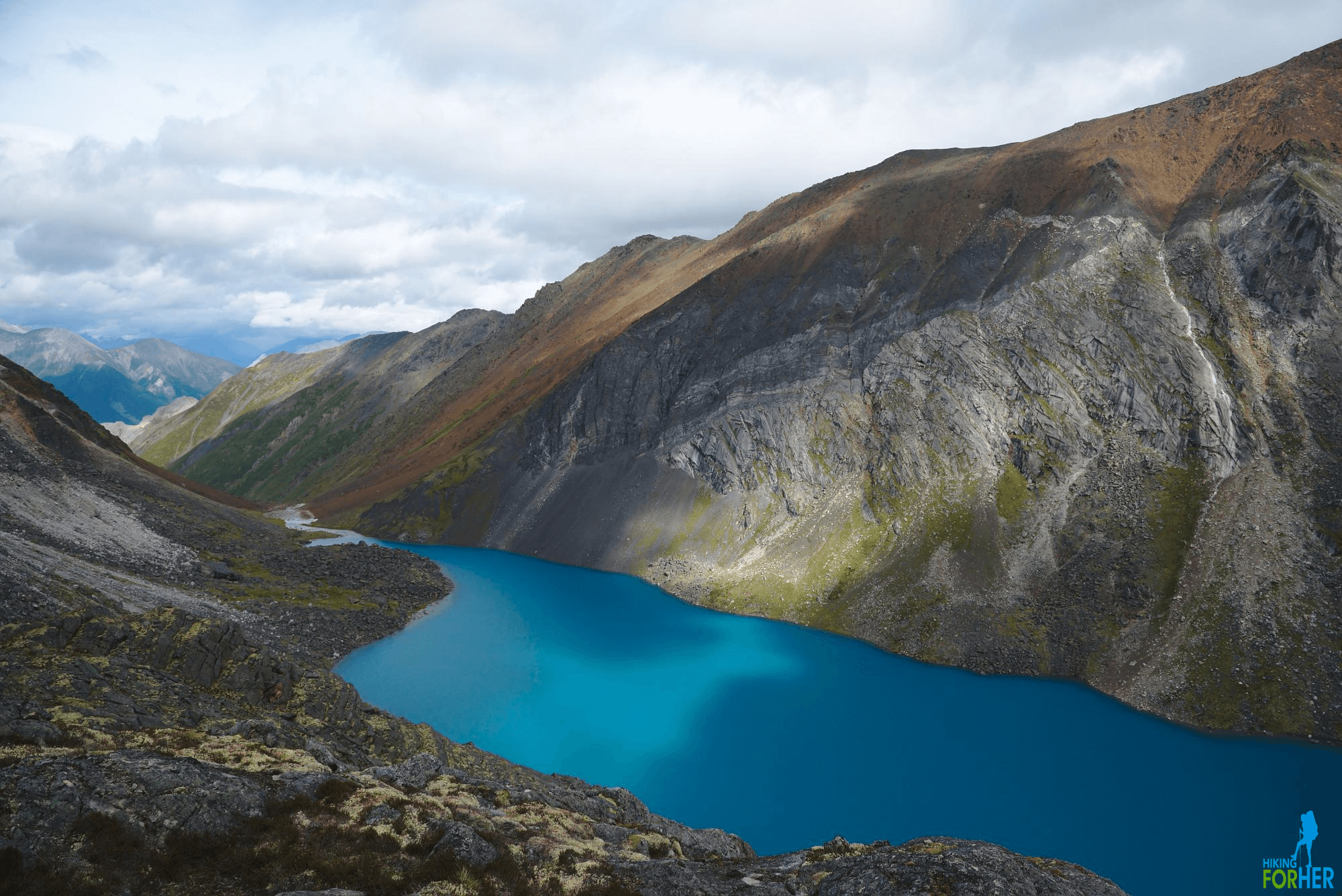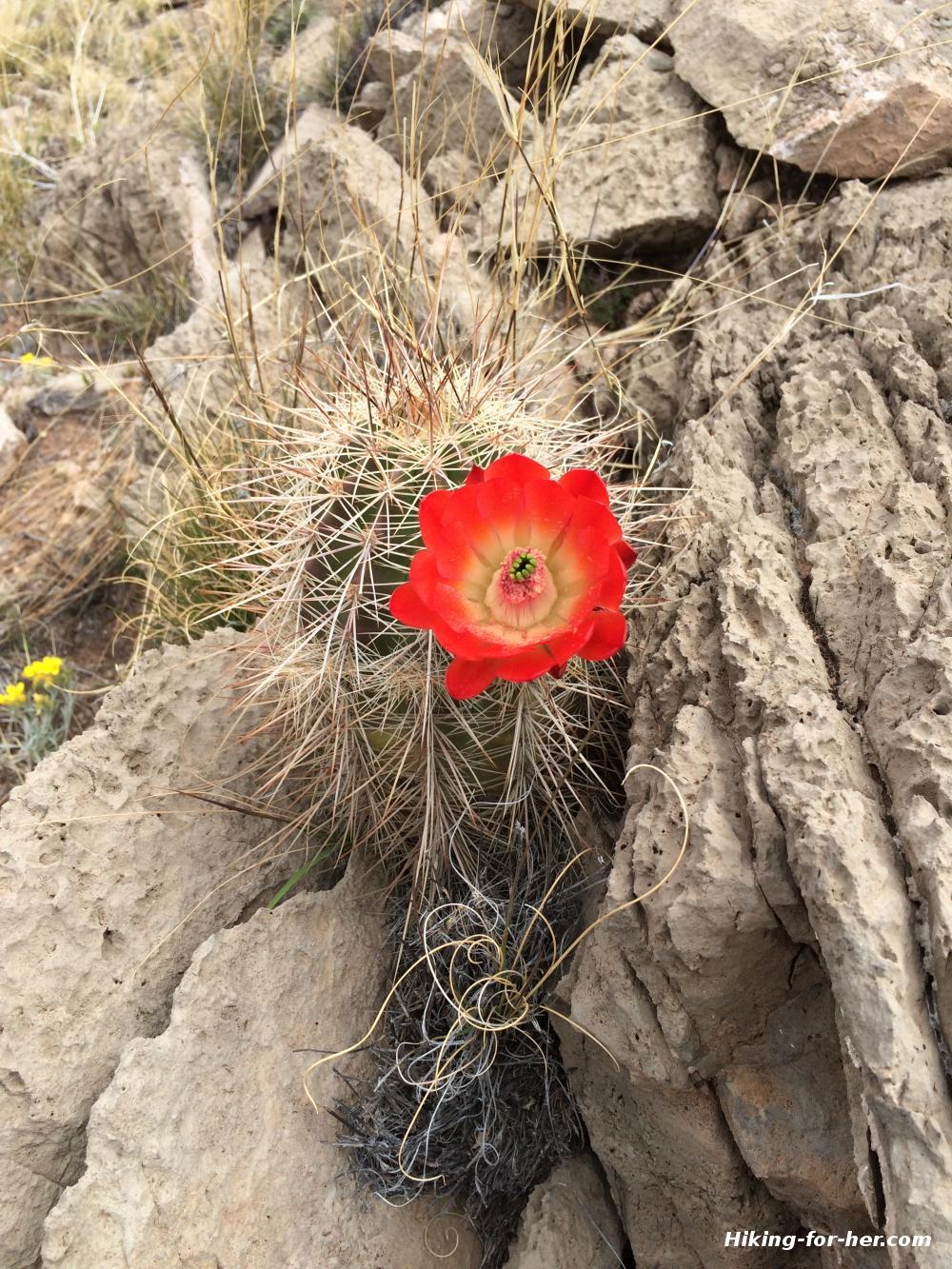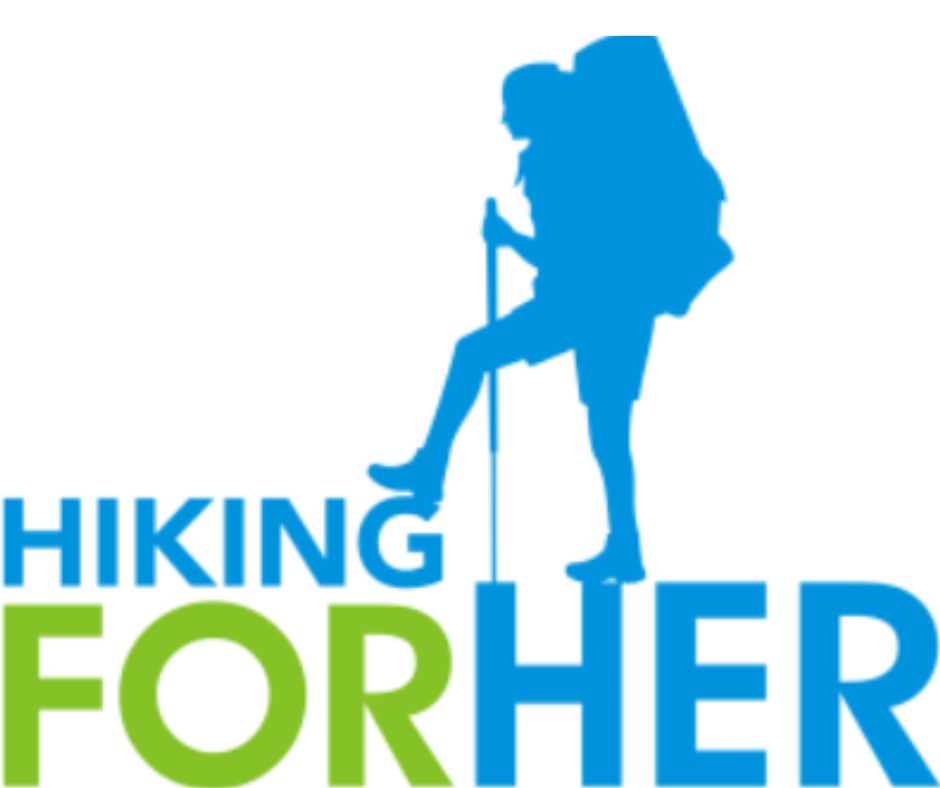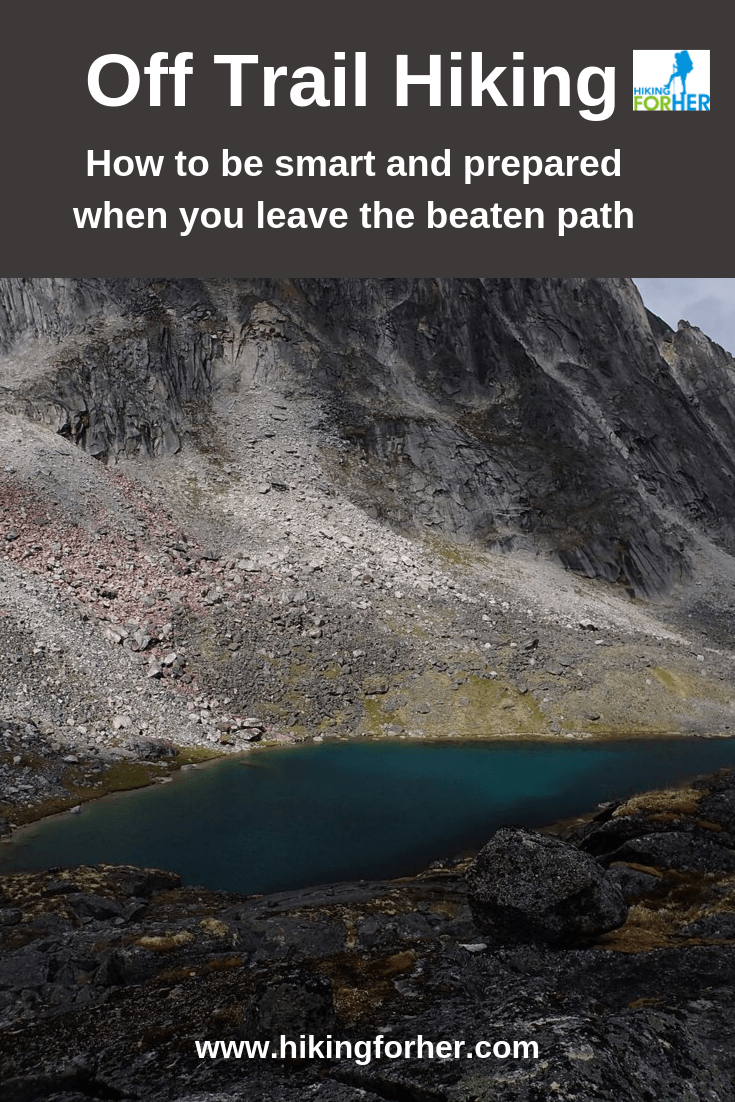Off Trail Hiking:
Tips And Techniques
By Diane Spicer
Off trail hiking can take you to fantastic vistas, solitude, glorious animal encounters, pristine camp spots, and unspoiled backcountry.
It can also get you into deep trouble.
And challenge everything you think you know about yourself as a hiker.
Let's go over some tips and techniques for being a smart off trail hiker.
This includes a caveat: you are responsible for your own safety and well being, regardless of where you hike, but especially in the backcountry.
None of this information should be taken as "must do" advice.
Use your own head, heart and gut to make good choices when navigating off trail.
Curious about where I learned to hike off trail?
Read about the remote hiking destinations I enjoy.
Now let's outline how to make "off the beaten path" more than just a phrase you use in conversation.
Start with fundamentals of
safety and navigation
I know this is old fashioned thinking, but carrying a paper map means you eliminate the horror of a dead battery.
You also avoid the possibility that you won't have access to a clear shot at the sky. Those GPS satellites can be hard to line up sometimes.
Map reading skills are super important essential for off trail navigation.
Ease into things with these articles:
As for safety, this link to a lengthy list of hiking personal safety resources will get you thinking about the responsibility you have to yourself when you step off a trail:
Use every map you can find
to plan worthy destinations
Pour over so called "current" maps and locate an established access point to start your off trail adventure.
- Maybe there's an abandoned logging or mining road still marked on the map that you can use as a jumping off point.
- Does a current trail pass through friendly terrain near where you're headed?
- Can you be flown into a landing strip and left there for awhile?
High tech maps
You'd be surprised how much information you can gain about a potential off trail hiking destination by using GoogleEarth or Windy.com.
Try it! It's fun (but a tremendous time suck - you've been warned).
- Be sure to play around with the different layering effects to make landscape features pop out or recede.
Bonus: Windy also gives you weather conditions, a great way to get familiar with the conditions you will be facing in different seasons.
Old maps are treasure!
If you can get your hands on old maps (library archives, government libraries, or used book stores), you might discover abandoned routes that can take you into areas no longer accessible on an easy trail.
But someone put that trail in by following the easiest route!
- You'll get ideas for angles of attack to reach fun objectives: lake, valley, high point or summit.
But don't trust maps completely
They may be inaccurate, or simply wrong due to an update from nature: an earthquake, fire, retreating glacier, or flash flood.
Vegetation may have taken over a rocky slope.
Water crossings are impossible to predict from a map: sleepy little creeks turn into raging torrents after a thunderstorm.
Contour lines on a map may mask cliffs or other hazards.
Current conditions are nowhere on that map.
You get the picture!
So be prepared to face anything.
Seriously! Being prepared is your best move before you leave for off trail hiking.
- Use the resources on this website to get your gear and clothing dialed in, along with navigation and self care.
- Food matters, too!
A few paper map tips
Construct a mental map by studying the map before you head out. This can keep you out of trouble, because you have a rough idea of which landmarks you're going to hit.
In the field, fold your map until only the area you're interested in is displayed in your waterproof map case like the one I use.
Hold the map in your hand in the orientation that matches what you're seeing - unless you've got the rare brain that can flip, fold and turn the map perspective to match what you're facing.
Always study the map for the easiest opportunity to move across the landscape.
- A contour line that you can follow to avoid elevation changes (an altimeter will help keep you on track)
- A low spot or valley between two hills or peaks
Do a risk assessment if you're looking to save time with a so called short cut or dicey maneuver. What might go wrong?
- And is there a safer way to get to your objective, even if it's longer?
If you want or need to gain elevation as quickly as possible, study the map for potential routes that take you to a ridge, then a pass with easier going to the summit.
Lucky you! It's not always that easy.
Like in poor visibility.
How will you guide yourself to your destination?
- A compass + map is the answer in dense forests or bad weather.
Let everyone take a long look at the map.
I'm always amazed at how different people will spot different routes, and some of them might have merit as Plan B if an "obvious" route doesn't work out.
- Group think at its best.
- But let one person be the leader on your agreed upon route. Makes things simpler, sometimes safer!
Hooked on GPS?
Consider this VOX article entitled "Is GPS ruining our ability to navigate for ourselves?"
Think about how and when you use GPS, and whether it's robbing you of some of the mystery and fun of navigating for yourself on a crosscountry route.
- Or across town in your car
If you're going to rely on GPS, be sure to use it for more than navigation:
- Track and record your movements to tally up your daily elevation gain/loss, speed, and time spent not moving.
- Put in way points at frequent intervals so you can retrace your steps if needed, regardless of visibility or weather conditions.
- Compare your GPS route to your detailed topographic paper map at a scale of 1 inch = 2,000 feet.
- Record notes on terrain features, route finding, obstacles and other important details for your debriefing session after the trip.
Wean yourself off reliance on GPS by starting to use it as a backup navigation method to your paper map and compass.
- Just be aware of battery life if it's turned on but not used frequently - it's easy to forget about it in your backpack when you're using a paper map.
 Solitude and so many exploration opportunities await when you go off trail hiking. But how will you get over that next hill?
Solitude and so many exploration opportunities await when you go off trail hiking. But how will you get over that next hill?
Build up to the hard stuff
Now that you've got your map fundamentals dialed in, pick some training terrain.
- You want a challenge, but not a life altering one.
A great way to build confidence is to establish a base camp and plan several day hikes from it. This slingshot approach gives you the comfort of knowing you have a home base, but the freedom to explore in all directions.
Suggestions for your base camp:
- subalpine meadows that take you through vegetation and rocky outcrops so you must choose a route
- a valley between two high points so you can't get lost
- fairly densely wooded flat land, maybe with a water crossing
An even softer approach to off trail hiking
Build your skills in bite size chunks on a day hike using a favorite, familiar trail.
Study the map for an opportunity to navigate off trail from prominent Point A on the trail (like a trail junction or saddle) to Point B.
- If you can use a ridgeline, that's ideal because you'll stay out of dense vegetation or draws that slow you down and turn you around.
- If you're at high altitude, use these tips for safety.
Or pick a fun destination which is just a short straight line distance off trail, like a lake or high point, to build your confidence.
- Keep track of the obstacles you encountered, and how you managed them.
Another approach:
After studying the map for potential hazards like elevation drops or cliffs, follow a creek (or dry creek bed) for a set distance. Keep track of the features on the other side.
- Then turn around and find your way back on the other side.
- Be prepared to bail and cross back to the other, known side, because a map can never give you exact conditions.
Off trail hiking tips
Conserve your mental energy and guard your physical reserves by being smart about the way you move across the landscape.
Game trails
Beaten in trails from deer, goats, sheep, elk, or caribou may be abundant, and it's tempting to follow these faint paths as a quick way across a slope.
Don't be afraid to use game trails across talus slopes or other areas where you have good sight distance. Animals like short cuts, too!
But you must realize by now that these sure footed animals go where humans are not able to follow.
- Stay alert if you're using a game trail in steep or densely vegetated areas.
Vegetation and you
Don't waste time and energy fighting brush.
- If you can't find a way through a dense section of terrain within a few minutes, turn around and reconsider your route.
- Ditto for a huge swath of downed trees due to windstorms or fires.
If you're going to gut it out, be sure all loose strings, straps and clothing are locked down to avoid snags and falls. Check your boot laces, too.
Don't wreck the neighborhood
Respect the vegetation you're mashing and crashing through as you look for the easiest path.
This is somebody's home, food source and protection!
Wetlands in particular are fragile beneath your boots.
When at all possible, step on durable surfaces like rock, snow, gravel: Leave No Trace.
If there are more pairs of boots than yours, spread out and avoid following closely in each other's footsteps.
Lighten up
Go as light as possible to minimize chances of extreme fatigue, getting hung up in dense brush, or losing your balance on slopes with dicey footing.
Always be on the lookout for surface water so you can replenish your supply as you move along, rather than having to carry it for long distances.
- Never pass up an easy opportunity to top off your water bottles or hydration bladder.
- Double never in arid conditions!
Take these precautions on an incline
Trails are built to specifications that guarantee good tread and realistic slopes.
But you don't have the luxury of a trail, so slow down and be smart.
When you're navigating a slope, take precautions with your feet to remain stable.
- Don't move a foot without planting your poles first.
- Now is the time to use the "uneven pole" trick: the uphill pole should be shorter than the downhill one. Or grip the uphill pole lower down if that's comfortable.
- Probe rocks with a trekking pole for tipsiness before you trust your weight on them. What looks stable can take you for a scary ride.
- Use your balance to lean into the hill, leading with the shoulder closest to the slope.
- If you have a fear of heights, keep your eyesight trained on your feet as much as possible.
- Keep your backpack close to your body, and use proper packing technique. You might have to repack, or tighten up your backpack straps, before you start up or down the hill.
- Be sure your boot laces are tied. Sounds silly, but one of the worst mistakes I ever made before starting across a slope was not checking. I've got a scar to prove it!
The cairn controversy
Purists believe that encountering a rock cairn in the backcountry is a crime upon humanity, worse than talking during a concert.
- In my opinion, if you're way out there, you should know what you're doing. A cairn spoils the illusion of "first boots here".
Others are grateful for a clue when the going gets dicey, and I can't fault them: sometimes things go sideways and evidence of human travel brings confidence in your navigation decisions.
Some off trail hikers (myself included) may erect temporary rock cairns to cross terrain in one direction when landmarks aren't helpful (poor visibility, limited sight distance, expansive permanent snow fields, etc.), and scrupulously take them down upon the return trip.
- If there isn't going to be a return trip, no unsightly cairn.
And heads up: critters and plants depend on rocks for shelter, a source of moisture or water, and sometimes food caught in crevices.
When you pick up a rock, you're disrupting a way of life.
- Don't get in the habit of making them for artistic expression.
Adjust your expectations
during off trail hiking
Distance and time will change when you're off trail.
Mileage that takes only an hour on an established trail could take several hours, maybe even half a day, depending on weather conditions, your energy level, and terrain.
- Forget the 3 mph rule. In tough terrain you'll be lucky to make a third of that.
Your sense of time will change because you're dealing with a whole new set of challenges.
- Bring a reliable time keeper. Consult it often to avoid running short on daylight.
Add in some wiggle room and pad your turn around time just a bit if you're hiking with other people.
Going solo means you can go as fast as you'd like, but even then, unpredictable events can slow you down or stop you completely.
If you're a fan of straight line travel, let it go! You might find that a circuitous route makes the most sense around a big obstacle.
Slow and steady wins the race.
And brings you some pretty sweet surprises!
 You might be the only person to see this beautiful bloom when you know how to navigate off trail
You might be the only person to see this beautiful bloom when you know how to navigate off trail
Plan for possible consequences
and trouble in the backcountry
when off trail hiking
Once you've got boots on the ground and your navigational plans seem rock solid, it's show time.
I've discovered that sometimes what looks really gnarly in the distance turns out to be relatively easy going.
But don't relax your vigilance.
Use the zoom feature on a camera, or a pair of binoculars, to scan the terrain ahead of you for navigational obstacles or animal activity.
"Glassing" or what I call "sweeping" will save you a lot of time and keep you out of trouble.
- You can't tell how deep a ravine or notch is until you're right up on it sometimes.
- Bears love off trail travel, just like you do! And they can get cantankerous if they're startled by unexpected visitors. So spot them first.
- This habit can also buy you some surface water not indicated on the map for replenishing your supply. No dehydration for you!
You do have a way to communicate with the outside world, right?
A satellite phone might be overkill, or it might be a great idea in the Alaskan or Canadian backcountry.
A personal locator beacon, or a satellite messenger make sense when you're learning the ropes of off trail hiking.
First aid skills up to speed?
Great!
And so is your survival kit, right?
But there's another thing to bring: a good attitude.
Attitude is all
You think you're in control, but you're not.
So go into the backcountry knowing that your skills and decisions will only get you so far.
Be prepared to be humbled, slowed down, stopped, challenged.
It's all part of the experience! Roll with it.
Heads up
There are certain types of hikers who are miserable or dangerous during off trail hiking.
In my personal experience, these are folks who:
- are literally tender footed: not conditioned for brush, rocks, steep inclines and sometimes all 3 at once
- regard a straight line as the best line
- won't look at what's right in front of them on the map or altimeter, let alone compare it to the reality under their boots
- disregard input from other group members
- complain about decisions that were made with the best data possible at the time but didn't turn out well
If you're going into the backcountry with people you don't know well, take them on a few trial runs before the big trip to identify any attitude issues that could jeopardize your success and well being.
Be strict with your good habits
You know all the stuff that front country hikers are told to do for each and every hike?
- File, and follow, an itinerary.
- Have at least one method of communication with loved ones and a source of help.
- Know basic first aid and carry the right supplies.
- Ten Essentials + your common sense
You, my friend, should be very strict with yourself about following those rules.
You're going into unknown territory with unpredictable conditions and the possibility of injury or getting lost.
You owe it to yourself and your loved ones to be impeccable!
Plus, know when to call it quits. Pride, ego, stubbornness ... no room for those in off trail hiking.
- When the terrain and weather defeat you, accept it with good humor and turn back.
- You've learned a lot and tomorrow is another day (now where have I heard that before?).
Also a good habit: sharing your hard won knowledge with other off trail enthusiasts.
- And maybe they'll return the good karma and get you into some impressive spots!
Enjoy the challenge
of off trail hiking
There is a lot to be said for challenging yourself as an off trail hiker.
The opportunity to explore favorite destinations with fresh eyes as you're learning is life changing.
You'll see places that no one else does.
And your backcountry skill set will grow, improve and expand.
Just be smart about it, using the resources on this page.
Home page > Best Hiking Tips >
Off Trail Hiking Tips
|
I get emails all the time about what I wear, eat, carry and love to use on the trail. That's
why I provide affiliate links to you: the best gear that I use myself and have seen used by other hikers is instantly
available for your consideration, and the gear company sends a few
pennies per dollar to this reader-supported hiking website. There is no added cost to you! Everyone ends up a winner: Great gear for you, strong gear companies, and more free hiking tips for everyone. Thanks very much for your support. It's warmly and sincerely appreciated. It also helps send these hiking tips to all your virtual trail buddies around the globe. |
 |



